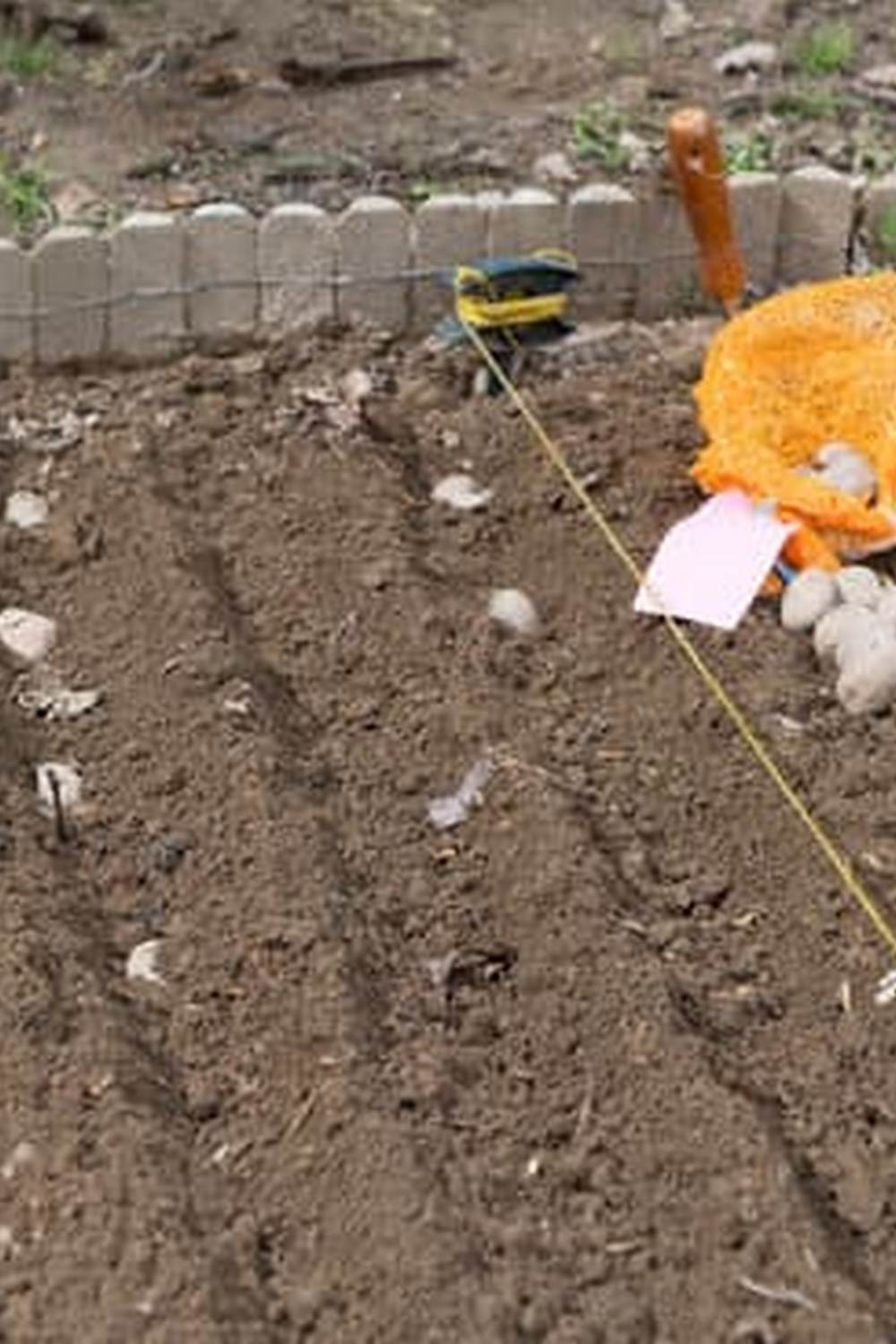Are you looking to grow your own vegetables but have limited space for a traditional garden? Square foot gardening may be the perfect solution for you. This article will delve into the concept and principles of square foot gardening, with a focus on understanding vegetable spacing requirements.
Square foot gardening is a method of intensive planting in a small, raised bed that divides the growing area into equal sections. It is an efficient and productive way to grow a variety of vegetables in a limited space, making it ideal for urban or small backyard gardens. The key to successful square foot gardening lies in understanding the spacing requirements of different vegetables, which will be discussed in detail later in this article.
By utilizing square foot gardening techniques, gardeners can enjoy various benefits including increased yields, reduced maintenance and weeding, optimal use of resources such as water and soil, and easy accessibility to all plants. This innovative approach also allows for better organization and planning within the garden layout. In this article, we will explore the advantages of square foot gardening and how it can transform your vegetable growing experience.
Benefits of Square Foot Gardening
Increased Yield in Limited Space
One of the major benefits of square foot gardening is the ability to grow a significant amount of vegetables in a small area. Traditional row gardening often wastes space, but with square foot gardening, you can maximize every inch of your garden. By carefully planning and spacing out your vegetables, you can grow a variety of crops in a confined space, making it ideal for urban or small backyard gardens.
Reduced Maintenance and Weeding
With the controlled spacing and layout of square foot gardening, there is less room for weeds to take over. This means less time spent weeding and more time enjoying your garden. Additionally, the close proximity of plants creates natural shading which helps to suppress weed growth. The reduced need for maintenance makes square foot gardening an efficient and low-maintenance way to grow vegetables.
Diverse Planting Options
Square foot gardening allows for the diversity of plant types within a small area. Because each square can accommodate a different type of vegetable based on its individual spacing requirements, you can have a wide variety of vegetables growing side by side. This allows you to experiment with different crops and enjoy a diverse harvest from your limited space garden.
By embracing the concept and principles of square foot gardening, individuals can cultivate fresh produce even in small spaces efficiently. The technique’s prolificality indeed fascinates many green thumbs who aim to maximize their plot yield while minimizing effort – making it ideal for home gardeners looking to optimize their crop production per square foot.
Choosing the Right Vegetables
Square foot gardening is a popular and effective method for growing vegetables in a limited space. When choosing the right vegetables for square foot gardening, it is essential to consider their spacing requirements to ensure optimal growth and productivity. Here are some of the best vegetables for square foot gardening and their recommended spacing:
- Lettuce: Lettuce is an ideal vegetable for square foot gardening, requiring only 4 inches of spacing between plants. This means you can plant 16 lettuce plants in a single square foot.
- Carrots: Carrots also thrive in square foot gardens, needing approximately 3 inches of spacing between plants. You can plant up to 16 carrot seeds in one square foot.
- Radishes: Radishes are a great choice for square foot gardening due to their small size and quick growth. They require about 2 inches of spacing between plants, allowing you to grow up to 36 radish plants in a single square foot.
When planning your square foot garden layout, be sure to take into account the specific spacing requirements of each vegetable to make the most out of your limited space.
In addition to these vegetables, other suitable options for square foot gardening include spinach, kale, onions, and herbs such as basil and parsley. By carefully selecting vegetables with compatible spacing requirements, you can maximize the productivity of your square foot garden while enjoying a variety of fresh produce throughout the growing season.
Square Foot Garden Layout
When it comes to square foot gardening, the layout of your garden plays a crucial role in maximizing space and productivity. The concept of square foot gardening revolves around creating small, organized spaces for different vegetables, herbs, and flowers. By utilizing this method, gardeners can effectively plan and arrange their gardens for optimal growth and yield.
To effectively plan and arrange your square foot garden, consider the following tips and techniques:
1. Divide your garden into equal sections: Utilize a grid system to divide your gardening bed into 1-foot by 1-foot squares. This not only helps in organizing the space but also makes it easier to plan what to plant in each square.
2. Utilize vertical space: Consider incorporating trellises or cages for vining plants such as tomatoes, cucumbers, and beans. This will allow you to maximize the use of vertical space while keeping the ground area clear for other vegetables.
3. Rotate your crops: To prevent depletion of nutrients in the soil and reduce the risk of pests and diseases, practice crop rotation within your squares each season.
4. Consider interplanting: Mix quick-growing crops with slow-growing ones to make the most of your space. For example, plant lettuce between slower-growing plants like peppers or tomatoes.
5. Use raised beds: If possible, create raised beds for your square foot garden. This not only provides good drainage but also makes it easier to organize and maintain your garden.
By implementing these tips and techniques for planning and arranging your square foot garden, you can make the most out of limited space while ensuring a productive harvest.
Spacing Guidelines
When it comes to square foot gardening, the key to success lies in proper spacing of vegetables. By efficiently utilizing space, gardeners can maximize their yield and create a visually appealing garden. Each type of vegetable has specific spacing requirements which need to be followed for optimal growth and productivity.
To start with, it’s essential to understand the concept of square foot gardening vegetables spacing. In traditional gardening, plants are usually spaced based on row length and the distance between rows. However, in square foot gardening, the focus is on dividing the growing area into small square sections and planting different vegetables within each square. This method helps in reducing wasted space and allows for easier maintenance.
Some common vegetable spacing guidelines for square foot gardening include:
- Leafy greens such as lettuce, spinach, and kale can be planted 4 per square foot.
- Larger plants like tomatoes, peppers, and eggplants should be given a whole square foot per plant.
- Root vegetables like carrots, radishes, and onions require 16 per square foot.
- Vining crops such as cucumbers, squash, and melons need a trellis or support system within their designated squares.
Implementing the correct spacing guidelines is crucial for preventing overcrowding and ensuring that each plant has enough room to grow. It also contributes to better airflow and reduces the risk of disease spread among plants.
| Vegetable | Spacing (Per Square Foot) |
|---|---|
| Lettuce | 4 plants |
| Tomatoes | 1 plant |
| Carrots | 16 plants |
Companion Planting
Companion planting is a gardening technique where different plants are grown in close proximity to each other to provide mutual benefits. In square foot gardening, this concept plays a crucial role in maximizing space and productivity. By carefully selecting companion plants, gardeners can create a balanced and sustainable ecosystem that encourages healthy growth and minimizes pest problems.
One of the key principles of companion planting is to pair plants that complement each other’s growth patterns and nutritional needs. For example, tall plants can provide shade for sun-sensitive crops, while certain herbs can repel pests that might otherwise harm neighboring vegetables. Additionally, some crops have root systems that work well together, such as deep-rooted carrots being planted alongside shallow-rooted lettuce.
In the context of square foot gardening, companion planting becomes even more significant due to the limited space available. By strategically grouping compatible plants together, gardeners can make the most of every square foot while promoting biodiversity and natural defense mechanisms. This not only leads to higher yields but also reduces the need for synthetic pesticides and fertilizers, making square foot gardening an eco-friendly approach to growing vegetables.
| Companion Plant Combination | Benefit |
|---|---|
| Tomatoes and Basil | Basil deters pests that commonly affect tomatoes |
| Carrots and Onions | Onions repel carrot flies while carrots repel onion flies |
| Cucumbers and Nasturtiums | Nasturtiums attract beneficial insects that control cucumber pests |
By implementing these companion planting strategies into your square foot garden layout, you can create a harmonious environment where vegetables support each other’s growth and overall health. It’s important to research specific plant pairings suited for your region and climate to ensure successful results. Integrating companion planting into your square foot gardening practice not only optimizes space but also contributes to a thriving and sustainable vegetable garden.
Maintaining Your Square Foot Garden
Watering
Proper watering is essential for the health and growth of your square foot garden vegetables. Since the soil in a square foot garden tends to dry out faster due to its compact nature, it’s important to water regularly. However, overwatering can lead to root rot and other issues, so it’s crucial to find the right balance. Consider investing in a soaker hose or drip irrigation system to ensure even and efficient watering.
Weeding
Weeds can quickly take over a small space like a square foot garden, so regular weeding is necessary to maintain the health of your vegetable plants. Be diligent about removing weeds by hand or using a small hand tool, being careful not to disturb the roots of your crops. Applying mulch can also help suppress weed growth and retain moisture in the soil.
Fertilizing
In a confined space like a square foot garden, nutrients can be quickly depleted from the soil as vegetables grow and produce. Using organic fertilizers or compost can help replenish these nutrients and ensure that your plants have what they need to thrive. Consider conducting a soil test to determine any deficiencies and adjust your fertilization routine accordingly.
By paying attention to these essential care and maintenance practices, you can ensure that your square foot garden thrives throughout the growing season and yields an abundant harvest of fresh, healthy vegetables.
Success Stories
Square Foot Gardening has been gaining popularity as a sustainable and efficient way to grow vegetables in limited space, and many gardeners have found great success with this method. One such success story is that of Jane Smith, a city dweller who transformed her small balcony into a thriving vegetable garden using the square foot gardening technique.
Jane was able to grow a variety of vegetables, including tomatoes, peppers, and lettuce, all within a compact 4×4 square foot space. By carefully following the spacing guidelines for each vegetable, she was able to maximize her yield and enjoy fresh produce throughout the season.
Another inspiring success story comes from John and Sarah Williams, a couple living in a suburban neighborhood with limited backyard space. Despite their lack of land, they were determined to grow their own vegetables and decided to give square foot gardening a try.
With careful planning and the use of raised beds, they were able to grow an impressive array of vegetables, such as carrots, radishes, and green beans. Their well-organized square foot garden not only provided them with an abundant harvest but also added beauty to their outdoor space.
These success stories highlight the versatility and productivity of square foot gardening when it comes to growing vegetables in small spaces. By following proper spacing guidelines and utilizing techniques such as vertical gardening and companion planting, gardeners like Jane Smith and John and Sarah Williams have been able to make the most out of their limited space while reaping the benefits of fresh, homegrown produce.
These stories serve as inspiration for others looking to start their own square foot gardens with the right vegetable spacing for optimal growth.
Conclusion
In conclusion, square foot gardening offers a practical and efficient approach to growing vegetables in limited space. By understanding the concept and principles of square foot gardening, gardeners can maximize their productivity while minimizing the amount of space required. Whether you are a beginner or an experienced gardener, this method provides numerous benefits, such as reduced maintenance, higher yield per square foot, and better organization.
When it comes to choosing the right vegetables for your square foot garden, it is essential to consider their spacing requirements. By following specific guidelines for each type of vegetable, you can ensure that they have enough room to grow and thrive. This meticulous planning will also contribute to healthier plants and a more abundant harvest at the end of the season.
In essence, square foot gardening with proper vegetable spacing can be a fulfilling and rewarding experience for any gardener. Not only does it allow you to make the most of your available space, but it also promotes sustainable and eco-friendly practices in urban or small settings. By implementing the tips and techniques outlined in this article, you can create your own thriving square foot garden that provides fresh produce throughout the year.
So why wait? Start planning your square foot garden today and enjoy the satisfaction of growing your own vegetables with just the right amount of space.
Frequently Asked Questions
What Is the Spacing for Square Foot Garden Plants?
The spacing for square foot garden plants can vary depending on the specific plant’s size and growth habits. In general, smaller plants may be spaced closer together, while larger ones need more space to thrive.
How Many Vegetables Can You Grow Per Square Foot?
The number of vegetables you can grow per square foot also depends on the type of vegetable and its size. Some vegetables, like carrots or radishes, can be densely planted in a square foot, while others, like tomatoes or peppers, require more room to spread out.
How Far Apart Should You Plant Vegetables?
When it comes to planting vegetables, it’s important to consider the recommended spacing for each specific type of plant. This information can usually be found on seed packets or plant labels. Proper spacing ensures that each plant has enough room to grow and access to sunlight and nutrients.

If you’re looking to get into vegetable gardening, or are just looking for some tips on how to make your current garden better, then you’ve come to the right place! My name is Ethel and I have been gardening for years. In this blog, I’m going to share with you some of my best tips on how to create a successful vegetable garden.





